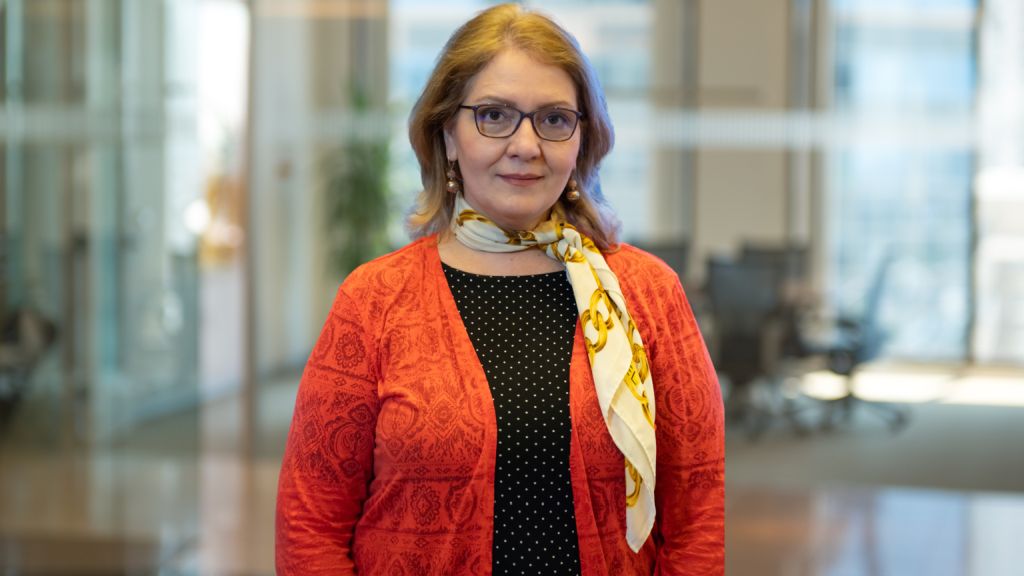Q: The first quarter of 2015 brought an unexpected GDP increase of over 4% compared to Q1 2014, exceeding the most optimistic estimates made by analysts and authorities. Do you think that is a trend that may continue in the rest of the year? Give us your personal opinion on the evolution of the Romanian economy in 2015. Which are the main engines that could sustain a more important growth this year and beyond?
Remi Vrignaud: Indeed, the first quarter brought an unexpected GDP increase. This is a trend that has to be confirmed in the next quarters. The 4% growth was a relevant growth, and maintaining it for the rest of the year would be a healthy development. We should not push the economic growth on the short term, we should rather have a long term approach, with a steady and sustainable growth. A push would do nothing more than overheating the economy and we might witness a subsequent decrease (an up and down movement) if we force it on the short term. The evolution of the economy is conditioned by certain factors and there are certain threats that might influence this evolution by the end of the year. For example, the agriculture is one of the factors that might cause some troubles due to the climate conditions (draught but also natural catastrophes – phenomena with a certain cyclicality which affected numerous villages and farmlands in the past years). Here I have to point out the importance of the insurers, as a potential factor of stability, providing protection against catastrophic risks and easing the possible pressure on the state budget in case of occurrence of such catastrophic phenomena. The numbers concerning the budget deficit are not looking so bad, but it is important for people to be protected in case of a natural catastrophes occurrence.
We should not forget the BSR test ran by FSA (Financial Supervisory Authority) which evaluated the capacity of the insurers to cope with catastrophic events. Allianz-Tiriac is one of the stable players on the market, capable of paying claims of EUR 700 million in case of a catastrophic event, with a solvency ratio high above the minimum value requested by the law.
Q: How have you perceived (if so) this positive evolution in your business? Have you noticed any positive developments / trends? Or, on the contrary? Please, detail.
Remi Vrignaud: We have seen a positive evolution of our insurance business in the past year, partly because of the evolution of the economy and partly due to our good business conduct: good underwriting procedures and improved products and services. The insurers are not pioneers, they are not acting separately from the rest of the economic environment and they are influenced by the general evolution of the economy. For example, the revival of the leasing sales impacted the insurance business. The construction sector and the ‘Prima casa’ program also have an impact on the insurance business and results. A healthy development rhythm of the economy might translate into a sustainable evolution of the insurance business. For example, we have seen how, during the crisis period, the budgets and certain expenses (among which insurance expenses) were cut. We hope a revival of the economy would bring a reshaping of the budgets and, implicitly, an increase of the expenses allotted for insurance products.
Q: Which were the main events and trends that have marked your industry and, in particular, your activity last year? How has the market changed? Which were the main drivers of your activity?
Remi Vrignaud: In the past year we have witnessed a series of events that might influence, on the long run, the trust of the clients in the insurance system. The situation can be solved only if every ‘actor’ on the Romanian insurance market acts responsibly and by that I mean that every insurance company and the other institutions involved put the client’s interests first. We have said this before. The insurance business is based on trust. It cannot exist without this trust. To be a trustworthy partner means that you should be financially strong and stable so that the client can trust you will be there and you will pay the indemnities when the risks occur. The companies have to assume their part of responsibility and to be a solid partner.
In our opinion, the insurance market has a maturity test to pass. The market is still not capable of becoming profitable. This is a process that might be considered a maturity test for the market – giving up the fight for market share and entering a new fight – to provide our clients with the best services. It is important that all the clients pay the right price for the risk coverage they receive.
2015 also brought an important change of deductibility on the health insurance segment, a change which might boost the sales on this line of business. The private health insurance products represent an important alternative, people have to understand they have to become more responsible, and the change of the deductibility this year is certainly helping in this process. The same model should be applied and fiscal incentives should be offered on the life insurance segment as well, in order to activate the market potential in this area, the more so, as the life insurance products represent a very important alternative for protection and savings/ investments.
And last but not least, an important event on the insurance market is the BSR test, carried out by FSA, a test which points out once again the importance of the insurers’ capacity to pay the due indemnities in accordance with the stipulations of the insurance contracts. In case of a catastrophe, the insurers can act as an element which keeps the macroeconomic balance and helps ease its impact on the economy and on the budget.
The main driver of Allianz-Tiriac business in 2014 was the non-life segment (+7.7% in 2014) and especially the non-motor and health segment, although the motor insurance continues to be an important part of our portfolio. We are glad to see that non-motor lines had a positive evolution in the past year; from our perspective, people are beginning to understand the real use of an insurance policy.
Q: Which are your expectations / plans for 2015? Which are the main challenges, opportunity and threats in your industry?
Remi Vrignaud: Our main goal in 2015 is to add more value for our clients, to become more accessible and transparent for them and to improve the quality of our services. If we are referring to the post-sales services, we have to point out things are simplifying and becoming more efficient. Our claims inspectors are already using advanced technology for claims assessment (digital devices), which significantly improves the claims settlement process. We also aim this year to consolidate the profitable growth trend of our business. We have planned to exceed the benchmark of RON 1 billion in terms of income from insurance business.
In terms of services, in 2015, we are making and will continue to make consistent steps towards digitalization. Digitalization is necessary in today’s world if we wish to be there for our clients and has to become a part of our business – from the selling process to the claims settlement process. This year, for example, we will come up with some news for our clients who own smartphones, which will allow us to be closer to them, wherever and whenever they need us.
Main challenges of the insurance market
The main challenge of the insurance market is to become profitable. The lack of profitability is the greatest weakness of the Romanian insurance market, in spite of an improvement of the combined technical ratios. Lack of profitability is generated, as it has always been, for years, by the motor segment. The claims rate and the bodily injuries are influencing in the highest degree the evolution of the motor segment. What we need is a consistent practice to settle the value of the indemnities paid for bodily injuries. The value of the claims paid for MTPL in 2014 represented 48.6% of the total claims paid on the non-life segment. A great part of this amount is represented by the indemnities paid for bodily injuries. The market needs predictable and stable principles for establishing the value of these indemnities.
Main opportunities in 2015 on the insurance market
In 2015, we see as an opportunity the resumption of the growth cycle in terms of GWP, but this has to go hand in hand with the market profitability. A great achievement related to one of the market opportunities this year is represented by the deductibility for the health insurance products, which might stimulate the growth of this segment.
The main threats in 2015
There are several threats the insurance market has to deal with in 2015. One of them is the image of the insurance market, which has to improve in order for us to be able to maintain the trust of our clients. Another important threat is represented by the potential monopole on the claims settlement segment – CEETAR, an initiative which will prejudice the best interest of our clients. CEETAR will translate through the establishment of an institutional body of experts for claims evaluation. The CEETAR initiative is one which creates a gap between us and the European practice and is being promoted by certain repair shops. The establishment of CEETAR will basically create an unsupervised monopole, letting the door open for frauds. The establishment of an institution like CEETAR will directly contribute to the increase of the insurance premiums and will block the claims settlement process, thus creating a major prejudice for our clients. Moreover, such an initiative might leave approximately 1,000 claims inspectors jobless.






























